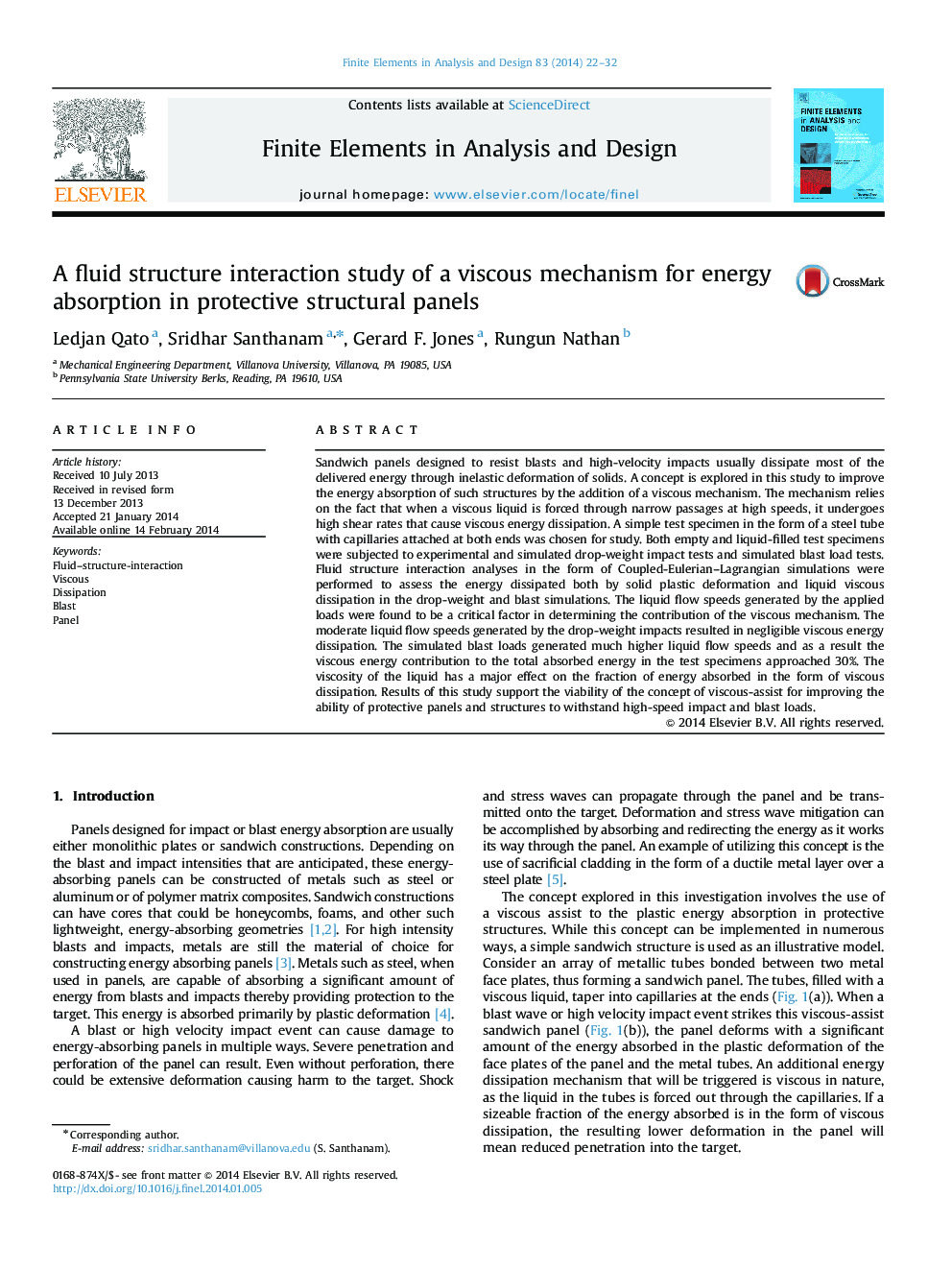| کد مقاله | کد نشریه | سال انتشار | مقاله انگلیسی | نسخه تمام متن |
|---|---|---|---|---|
| 513779 | 866644 | 2014 | 11 صفحه PDF | دانلود رایگان |
• A viscous mechanism is studied to improve the energy absorption of sandwich panels.
• Fluid structure interaction simulations were performed to assess the energy dissipated by plastic deformation and viscous dissipation in drop-weight and blast simulations of test specimens.
• The liquid flow speeds generated by the applied loads are found to be a critical factor.
• The viscosity of the liquid has a major effect on the viscous energy absorbed.
• The concept of viscous-assist is a viable means for improving the ability of protective panels and structures to withstand high-speed impact and blast loads.
Sandwich panels designed to resist blasts and high-velocity impacts usually dissipate most of the delivered energy through inelastic deformation of solids. A concept is explored in this study to improve the energy absorption of such structures by the addition of a viscous mechanism. The mechanism relies on the fact that when a viscous liquid is forced through narrow passages at high speeds, it undergoes high shear rates that cause viscous energy dissipation. A simple test specimen in the form of a steel tube with capillaries attached at both ends was chosen for study. Both empty and liquid-filled test specimens were subjected to experimental and simulated drop-weight impact tests and simulated blast load tests. Fluid structure interaction analyses in the form of Coupled-Eulerian–Lagrangian simulations were performed to assess the energy dissipated both by solid plastic deformation and liquid viscous dissipation in the drop-weight and blast simulations. The liquid flow speeds generated by the applied loads were found to be a critical factor in determining the contribution of the viscous mechanism. The moderate liquid flow speeds generated by the drop-weight impacts resulted in negligible viscous energy dissipation. The simulated blast loads generated much higher liquid flow speeds and as a result the viscous energy contribution to the total absorbed energy in the test specimens approached 30%. The viscosity of the liquid has a major effect on the fraction of energy absorbed in the form of viscous dissipation. Results of this study support the viability of the concept of viscous-assist for improving the ability of protective panels and structures to withstand high-speed impact and blast loads.
Journal: Finite Elements in Analysis and Design - Volume 83, June 2014, Pages 22–32
